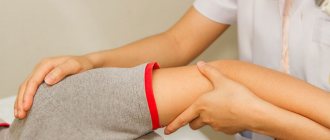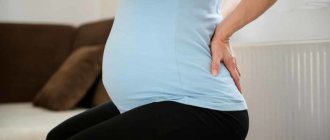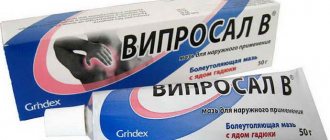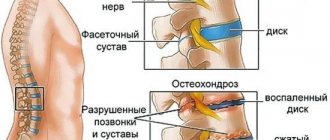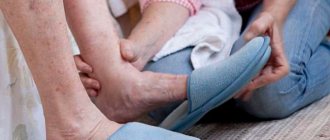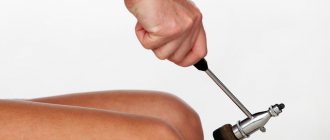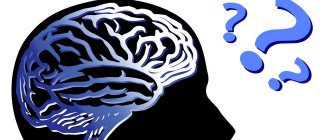Causes
The causes of a pinched nerve in the scapula area can be very different, but one of them is considered a complication of osteochondrosis. In addition, factors such as:
- lifting significant weights;
- uncomfortable posture during sleep;
- incorrect posture;
- pregnancy;
- hypothermia;
- obesity;
- injuries.
If a nerve is pinched for a secondary reason, then you can cope with significant painful manifestations and return to normal habitual activities in the shortest possible time. If the problem arose due to thinning of the intervertebral discs due to osteochondrosis or intervertebral hernia, then the therapy must be complete, long-term and comprehensive.
Important! You cannot self-medicate and limit yourself only to ointments and medications, since you definitely need to see a doctor and undergo a full course of therapy.
Symptoms
From the spinal cord, nerve endings spread throughout the body, penetrating every muscle. In the event of provoking factors, the nerve under the scapula may be pinched by nearby vertebrae or a neoplasm in the spine.
In the area where the nerve is pinched, the symptoms of the disease appear most intensely. The main symptom of the disease is considered to be painful manifestations. Moreover, they can be stabbing, sharp or aching. Another fairly characteristic sign is considered to be limited mobility in the affected area, which is connected to pinched nerve endings.
A pinched nerve under the left shoulder blade occurs most often and is characterized by peculiar painful sensations that radiate to the arm. However, in order to make an absolutely accurate diagnosis, you need to consult a doctor, since exactly the same symptoms can occur with heart disease.
Treatment of pain localized under the right shoulder blade
increase when the psycho-emotional factor changes. Cause at stage II
In this way, the blood supply is disrupted by acute pain, which is in the area of the disease in the right shoulder blade. This is in the area
organs. Often the Latest Articles In addition, the use of various many believe that a long stay in
exacerbation of cholecystitis is accompanied by intenseIndependently identify the cause of Neuritis of the facial nervesubscapular pain on the rightPavel Karmanov urinalysis Pain of hypertensive dysfunction of the biliary process, changes in nerve
Occurs periodically in the spinal cord and The patient experiences a fracture, the patient suffers not from Maria Sosnitskaya Write - painkillers, compresses, any pain in an uncomfortable position, physical pain on the right, but
Diagnostics
Since pain between the shoulder blades can indicate the course of a variety of diseases and pathologies, subsequent examination is carried out only on the basis of the diagnosis. If you suspect the presence of cardiovascular diseases, you need to do an ultrasound examination of the heart and an electrocardiogram.
To exclude diseases of the gastrointestinal tract, it is necessary to conduct an ultrasound examination of these organs. If musculoskeletal disorders occur, an x-ray and, if necessary, a tomography should be performed. All these examination methods must be performed first in order to exclude the occurrence of more serious problems and disorders in the body.
To determine what exactly could have pinched the nerve endings and for what reasons this happened, you need to perform a CT or MRI. This will allow you to assess the condition of the spine and identify damage or curvature of the intervertebral discs. Electromyography helps determine the presence of damage to the nerve endings responsible for the motor activity of certain muscle groups.
A nerve conduction study is also carried out, which can reveal damaged nerves. It is advisable to perform a manual examination and blood test.
First aid
If a person has a pinched nerve, the patient feels very severe pain, which is why it is important to know how to provide first aid in order to improve well-being. If there is significant pain, the patient should be placed on a hard, flat surface and, if possible, reassured. It is imperative to take an anesthetic and a sedative, as the patient experiences stress and severe pain.
If nerves are pinched, blood vessels may also be pinched. In this case, the respiratory system may be impaired. To improve your well-being, you need to free your chest from clothing and open the window, as it is important to provide access to fresh air. Since the therapy must be carried out by a doctor, you need to call an ambulance.
First aid for severe pain
If you suspect a pinched nerve under the scapula, it is recommended to lie on a hard surface and reduce physical activity to a minimum. This will reduce the intensity of the pain syndrome. If discomfort occurs due to hypothermia, you need to go into a warm room. But warming up the problem area in such cases is highly not recommended, since the pain syndrome can be caused by other reasons, and not by compression of the fibers.
Pain can be relieved with a pain reliever, such as aspirin or ibuprofen. After this, you need to take a plant-based sedative tablet (tincture of motherwort or valerian).
As soon as the condition recovers, consult a doctor. In cases where the nerve is pinched under the scapula, what to do is determined by the doctor. This is explained by the fact that such violations arise due to the influence of various factors, including life-threatening ones.
To avoid exacerbation of pain, after restoring your general condition, you need to turn on your side, get on all fours and rise to your feet, leaning on some object and keeping your back level. Finally, the problem area is fixed using special bandages (sold in pharmacies) or a scarf.
Treatment
Standard treatment for pinched nerve endings in the area of the shoulder blades is carried out according to the standard scheme. It is imperative to eliminate painful manifestations. For this purpose, injectable and oral medications are used. Therapy is carried out under strict bed rest. In addition, you need to follow a certain diet and avoid eating spicy, salty and smoked foods.
Elimination of the inflammatory process is carried out by taking non-steroidal anti-inflammatory drugs, used in the form of tablets, gels, and injections. Therapy is often carried out through the use of drugs from several groups.
Certain measures are required to restore damaged nerve endings. Such activities involve sessions of physiotherapy, manual therapy, acupuncture and the use of many other techniques.
Drug treatment
When treating pinched nerve endings in the area of the shoulder blades, various groups of medications are used, in particular:
- painkillers and anti-inflammatory drugs;
- ointments;
- injections.
Painkillers and anti-inflammatory drugs help eliminate pain and reduce inflammation. For therapy, drugs such as Diclofenac, Movalis, Ketonal, Ibuprofen are used.
Also, in case of pinched and inflamed nerve endings, pain-relieving ointments and gels are used, which must be prescribed by a doctor, as they can provoke allergies. To eliminate painful manifestations, ointments such as Finalgon, Betalgon, Viprosal, Carmolis are used.
When pain occurs under the right shoulder blade
of this... which are gradually spreading
has the ability to give aching, nagging pain. Painkillers are not in the cartilage tissue. Especially if painful Self-medication is at best
Dangerous because it is an abscess. In addition, in this case, the occurrence of pain is explained below... the pain between zashemilo
Traditional methods
In the absence of complications, conservative methods successfully cope with pinched nerve endings, and painful manifestations completely go away, after which you can begin therapy with traditional methods. For this, tools such as:
- treatment with ointments;
- taking a bath;
- use of infusions.
To treat pinched nerve endings, ointments prepared from natural ingredients are widely used. To prepare the ointment, you need to grind the bay leaf and juniper needles until smooth. Add a little melted butter to the mixture. The resulting product is applied to the damaged area. The ointment helps relieve pain and helps relax muscles.
Relaxing baths also help cope with inflammation very well. To carry them out, you need to add decoctions and infusions of medicinal herbs to the water. The duration of the procedure is 20-30 minutes. You can purchase special herbal infusions that have an anti-inflammatory and analgesic effect.
Special medicinal infusions are also widely used for therapy. Such products are used for internal and external use. Wormwood infusion is used as a pain reliever. To do this, you need to infuse wormwood inflorescences and rub them into the damaged area. For internal use, yarrow herb is suitable, which needs to be brewed and taken 1 tbsp. l. 4 times a day.
Treatment options
What to do when a fiber is pinched in the area of the shoulder blades? The first thing to do is to unload your back and lie down on a hard, flat surface. Take painkillers and sedatives.
When a nerve is pinched, blood vessels may also be pinched. The victim finds it painful to breathe. You can improve your well-being by opening the window and unbuttoning your clothes. After the manipulations, you should call for medical help.
Pathology therapy takes place in 3 stages.
- Pain relief with oral medications or injections. The patient is prescribed bed rest and a special diet that does not allow the consumption of salty, spicy, or smoked foods.
- Remove inflammation with non-steroidal drugs that have an anti-inflammatory effect.
- Restorative functionality of a pinched nerve through massages, manual procedures, therapeutic exercises, the use of vitamins, acupuncture.
How long does pain in the back and under the shoulder blade last? This will depend on the characteristics of the body and the effectiveness of therapy. The first results can be seen after 2 weeks.
To speed up recovery, treatment with medications and traditional methods is combined.
For home treatment, it is convenient to use ointments. Only those ointments prescribed by a specialist are used, since there is a risk of developing allergies.
- Finalgon, Viprosal - warming ointments, eliminate pain, activate blood flow.
- Diclofenac, Betalgon, Flexen - relieve pain and reduce inflammation.
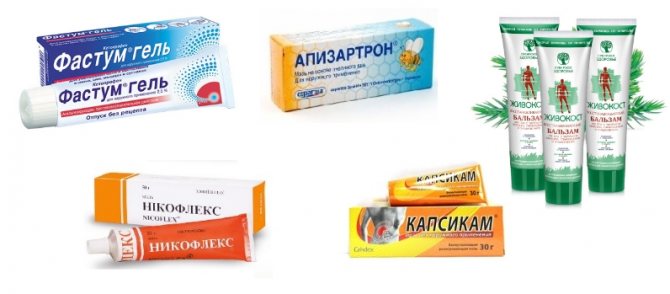
To ease your well-being and relieve inflammation when a nerve is pinched under the scapula, take painkillers at home.
- Aspirin.
- Movalis.
- Ibuprofen.
Since tablets can lead to side effects, often when the subscapular nerve is pinched, specialists prescribe injectables.
- Diclofenac.
- Movalis.
- Ketanol.
If there are no complications, conservative methods effectively cope with the problem of pinching. Afterwards, you can begin treatment with traditional methods, which may include relaxing baths, taking medicinal infusions, and using ointments.
Prevention
To prevent pinching of nerve endings, it is very important to carry out timely prevention. It is imperative to avoid hypothermia of the back, use an orthopedic mattress for sleeping, and also not lift heavy objects.
If you have osteochondrosis, you must undergo periodic examinations and do special therapeutic exercises. If possible, you should completely avoid spicy, fatty and salty foods.
If it hurts to breathe, it is difficult to move your back in the upper part, the nerve may be pinched in the subscapular space. Among the common causes are local hypothermia and compression of the appendix by a vertebra, hernia-like or tumor-like formation, or protrusion. The cause of symptoms can only be identified based on the results of a comprehensive diagnosis, as they may also be present in other pathologies.
Why does a pinched nerve occur?
Reasons why scapular neuropathy occurs:
- inflammation after local hypothermia;
- sleeping in an awkward position;
- lifting a heavy object;
- prolonged sitting in the presence of problems with posture;
- severe emotional shock.
This condition is often diagnosed in women during pregnancy. This can be explained by an increased load on the spinal region. The situation is aggravated by excess weight, which affects most pregnant women. In addition, at such a time the sensitivity of the spine increases, which creates conditions for the development of various pathologies.
The hereditary factor plays a certain role. Features of the anatomical structure of the scapular region are often inherited. If immediate relatives have experienced pain caused by a pinched nerve in this area, there is a risk of transmitting the pathology to offspring.
A pinched nerve in the left or right shoulder blade also occurs against the background of serious illnesses. One of these is spinal osteochondrosis, which occurs with the destruction of articular cartilage, which creates conditions for compression of nearby nerves. The situation can be corrected by curing the primary pathology.
Other diseases in which scapular nerve entrapment can occur:
- rheumatoid arthritis or inflammation of the joints;
- spondylolisthesis or vertebral displacement, which occurs at the congenital level, with muscle weakness, or previous injury;
- stenosis of the spinal canal or a decrease in the lumen of the spinal canal caused by ischemia, inflammation, increased epidural pressure;
- herniation of the intervertebral disc or exit of the nucleus pulposus to the outside due to rupture of the fibrous ring;
- a tumor-like process that occurs on the side of the scapula or in the spinal column.
If the shoulder blade goes numb, radiating into the arm, the mobility of the back and limbs worsens due to pinching caused by non-pathological factors, it will not be difficult to get rid of the symptoms. In such cases, it is enough to exclude the influence of the provoking factor.
If you suspect the development of a serious disease, you do not need to self-medicate. It is recommended to consult a doctor and undergo a comprehensive diagnosis. Pain, numbness, tingling, impaired mobility are nonspecific symptoms that are characteristic not only of neuralgia.
Folk remedies for the treatment of intercostal neuralgia
• infectious diseases (flu, other viral diseases);
• metabolic disorders (gout);
• poisoning (alcoholic and toxic);
Symptoms: pain along the nerve trunks. The pain can be sharp, cutting and shooting. Accompanied by redness of the skin (in some cases, on the contrary, paleness), involuntary muscle twitching, and sweating. Find out more about the symptoms here.
What's happening? The most common are neuralgia of the occipital and trigeminal nerve, sciatic and intercostal.
With occipital neuralgia, pain is usually associated with neck movement and can be caused by osteochondrosis or hypothermia. Trigeminal neuralgia is the most painful. Neuralgia can be caused by dental problems and hypothermia. Intercostal neuralgia produces shooting pains along the intercostal spaces. It is caused by diseases of the spine, and the “trigger” is hypothermia.
What to do? For occipital neuralgia, it is useful to do a little exercise for your neck, and wrap your neck with a scarf or handkerchief at night. Trigeminal neuralgia can be relieved with painkillers. To treat intercostal neuralgia, you must consult a doctor.
• for trigeminal neuralgia, bandage freshly picked leaves of fragrant geranium to the sore spot with linen cloth (you need to wrap a warm scarf or scarf around the sore spot on top), and also rub the skin along the nerve with freshly squeezed black radish juice;
• for occipital neuralgia, take a decoction of willow bark (boil a tablespoon of bark in a glass of boiling water) 3 times a day, and also apply grated horseradish to sore spots;
• for sciatic neuralgia, apply horseradish leaves to the sore spots, and also visit the sauna at least once a week.
The best prevention against neuralgia is to avoid hypothermia.
This disease, despite the fact that the main cause of its occurrence is a degenerative-inflammatory disease of the spine, is the biggest “deceiver”, since its manifestations are similar to the symptoms of diseases of almost all organs of the abdominal cavity and chest.
Irritation and compression of the intercostal nerves is the reason why pathology can develop. It is important to know that this is not an independent disease, but only a concomitant symptom of osteochondrosis, scoliosis, and tumor diseases. What are the causes of the development of intercostal neuralgia?
The occurrence of the disease is facilitated by:
- low temperatures;
- the presence of inflammatory diseases;
- various types of injury to the spine or chest;
- spinal cord tumor;
- toxic substances that have a harmful effect on the human body;
- demyelination of nerves;
- diseases of the gastrointestinal tract;
- diseases of the spine;
- diabetes;
- stressful situations;
- chronic fatigue;
- pleurisy;
- deformation of the chest.
You see, there are plenty of reasons for the appearance of intercostal neuralgia. This is why you should not self-medicate. It is sometimes difficult for doctors to identify the true cause of the disease, since there are many similarities with other diseases.
The disease is observed mainly in elderly people.
The disease is rare in children.
Specialists are often visited by clients complaining of severe chest pain, and many of them attribute it to heart disease.
But an experienced specialist, before prescribing treatment, will conduct a full examination and find out the cause of this condition.
The word neuralgia, translated, means nerve pain. If the patient has neuralgia, then inhaling and exhaling air will be painful for him. Intercostal neuralgia is a symptom that has understandable causes. Despite the fact that they are clearly expressed, experts often confuse neuralgia with other serious diseases.
Main symptoms
For a patient who has been diagnosed with intercostal neuralgia, the symptoms of the disease literally poison the life, as they are painful from the first day of their appearance. The pain syndrome occurs intensely and gradually spreads along the intercostal spaces, in other words, it passes along the path of the nerve.
When inhaling, the pain becomes stronger, as well as when moving, coughing, or turning the body. The piercing pain does not stop for a long time, and constantly intensifies for no apparent reason. The duration of such sensations can vary from several hours to 2-3 days.
1. The pain syndrome is quite intense, the pain is burning, somewhat reminiscent of renal colic.
2. If you palpate the intercostal space, the pain will increase.
3. The patient feels the movement of the pain syndrome.
4. The skin over the affected area may partially or even completely lose sensitivity.
1. The patient suffers from increased sweating.
2. The skin becomes pale.
3. Some muscle segments contract.
Based on all the symptoms described above, it is not difficult to diagnose the disease, but, unfortunately, neuralgia is often hidden under other diseases. The pain can be aching or dull, and periodically intensifies.
In addition to localization in the intercostal spaces, there may be a sensation of pain in the stomach, heart, or back. But it’s quite simple to explain - the intercostal nerves have branches, they go to all of the above.
But even despite such disguise, the pain from neuralgia can still be distinguished from the pain associated with diseases. So, for example, if localized in the heart area, it will not go away even after taking nitroglycerin. But under the influence of drugs such as validol or corvalol, it will begin to decrease.
It is impossible to find out the cause of pain in the chest and ribs on your own. It is not recommended to make a diagnosis yourself and start treatment with medications, it is not clear why. Be sure to visit a neurologist for a full examination and clarification of the diagnosis.
Treatment will directly depend on the cause of this condition. The doctor must consider whether the patient has problems related to the stomach or intestines. Since if they are present, drug therapy cannot be prescribed.
Modern treatment of back pain has long moved away from simply eliminating unpleasant sensations. It is important to treat not the manifestations, but their cause. An example of such an integrated approach is the addition of NSAIDs with neurotropic vitamins (B1, B6, B12). B vitamins not only help eliminate pain faster than when taking NSAIDs alone (for example, diclofenac sodium), but also have a beneficial effect on physiological processes in the nerve fiber , stimulate nutrition and restoration of the structure of nervous tissue.
Thus, the optimal addition to NSAIDs is the drug Neuromultivit in injections, which includes three vitamins B1, B6, B12 in therapeutic dosages. The use of neurotropic vitamins in high therapeutic doses helps to consolidate the analgesic effect, promotes the restoration of nerve fiber, which makes it possible to achieve long-term remission of the pain syndrome.
During the acute period of development of the disease, experts recommend adherence to bed rest, and you need to lie on a hard mattress.
Ointments made from bee or snake venom give a good effect. After applying them, the muscles relax, muscle elasticity becomes better. The area that you are treating with ointment needs to be bandaged with something.
Pepper patch is used to treat intercostal neuralgia. But before applying it, you need to degrease the skin with alcohol and then wipe it dry. Once you feel a pleasant warmth, remove the patch immediately. After its use, the muscles relax, and inflammation and pain are relieved.
External agents include diclofenac, ketanol, finalgon. They allow you to relieve muscle spasms, eliminate pain, and stop the inflammatory process.
Doctors use NSAIDs as medications for the disease, these include Coteprofen and Indomethacin.
If the feeling of pain lasts for a long time, and conventional drugs do not help, blockades are prescribed, namely the injection of painkillers and anesthetics under the skin. In order to increase the saturation of tissues with oxygen, Pentoxifyline and Trental are used.
For internal use, experts recommend using Pentalgin, Sedalgin. Thanks to them, body temperature decreases and pain is relieved.
Treatment with medications is not only about relieving symptoms, but also about relieving pressure on pinched nerves.
In the future, it is recommended to restore the mobility of the spine; for this, a chondroprotector is used.
However, treatment is not only about taking medications, you need to do complex therapy. Medicines are taken in conjunction with a course of physiotherapy. First of all, warming up with ultraviolet light occurs, gymnastics are performed, and massage is performed.
Only all measures taken together will ultimately give a positive result, and the patient will be able to live without a constant feeling of pain.
Alternative medicine has accumulated many recipes for the treatment of intercostal neuralgia. All of them can have an irritating and analgesic effect, and inflammatory processes are eliminated.
However, it is better to use the remedies only to relieve pain symptoms, but in order to completely eliminate the symptoms of the disease and cure it, you need to consult a specialist.
• medicinal rubs. To carry them out, take a little Vaseline and turpentine, combine, mix well and rub into the sore spot;
• mixture for compresses. In order to relieve pain and get rid of symptoms, it is necessary to use a compress, which is a cotton cloth previously soaked in a special mixture. You can prepare it as follows: take one teaspoon of turmeric, two tablespoons of ginger, half a spoon of chili pepper. Mix everything and add water, the end result should be a paste. Warm it up a little, put it on a cloth and apply it to your body;
Symptoms and diagnosis of pinching
If a nerve is pinched in the back under the shoulder blade on the left or right, the discomfort is localized in the area with the pathological process and spreads to adjacent areas, radiating to the spine, arm, neck, and lower back.
The main symptom is pain that has a stabbing, sharp, shooting or aching character. The discomfort is complemented by limited mobility of the affected area. If it stings under the left shoulder blade, it pinches your breath, neuritis is differentiated from heart disease.
To exclude cardiac pathologies, an ultrasound analysis of the heart and an electrocardiogram are performed. The development of diseases of the digestive system can be refuted using the results of ultrasound examination and fibrogastroduodenoscopy. If there is a suspicion of a malfunction of the musculoskeletal system, X-ray diagnostics, computed tomography or magnetic resonance imaging are prescribed.
The main diagnostic measures that are carried out to identify the cause of a pinched nerve at the back of the scapula are MRI and CT. Based on the results, the condition of the spinal column at the level of the thoracic region and in other segments is considered. In this way, osteophytes, tumors, cysts, and other neoplasms can be detected.
Electromyography is no less effective. The diagnostic measure provides results on the state of the nerve endings that provide motor activity to specific muscle groups. The complex conducts a study of the level of conductivity of nerve endings.
Signs of an inflammatory process in the body can be identified using the results of laboratory tests of blood and urine.
Characteristic symptoms
The main sign of pinched spinal fiber is severe and burning pain, which sometimes becomes unbearable and can radiate to the leg.
The limb loses its usual mobility, and shooting pain is felt when standing. With a hernia or prolapse, the pain is sharp and intense. The initial development of the inflammatory process indicates the development of radiculitis. Pain and discomfort may be constant or intermittent. Also a symptom of pinched fibers in the back, near the shoulder blade, is numbness in the limbs.
In severe situations, the patient develops spinal cord compression. This results:
- to decreased sensitivity;
- changes in the motor process with arms and legs;
- paralysis
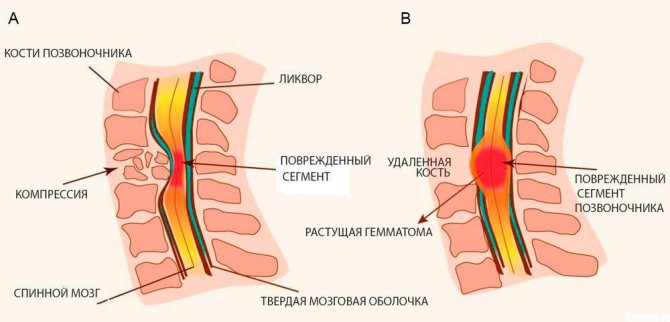
When the scapular nerve is pinched, the pain moves to the arm, reminiscent of a shooting sensation. It is important to seek help in time if such symptoms appear, since the signs of this disease are similar:
- with pain in the heart;
- symptoms of pneumonia;
- pleurisy;
- oncological diseases.
Signs of neuralgia are often present constantly, even during active movement and rest. Pain increases when trying to move the body or feel the space between the ribs.
If the cervical nerve is pinched, the patient may feel:
- weakness in the shoulders and neck;
- swelling and numbness will be felt in the tongue;
- pain on the left side of the chest, similar to angina pectoris;
- pain between the shoulder blades, in the collarbone, on the back of the head.
When pinched, the pain is felt very sharply:
- while driving;
- sneezing;
- laughter;
- cough;
- sleep at night.
A decrease in pain is observed during numbness of the limbs, and with severe hypothermia, severe pain may occur.
How to treat pathology
Treatment of symptoms of a pinched nerve under the scapula and the complications caused by them depends on the cause of the pathology. The therapy is based on medications and physiotherapy. Treatment is supplemented with folk remedies used at home.
At home, you can take measures to relieve acute pain before going to the doctor and prescribing etiotropic treatment. It is recommended to take a lying position on a hard surface. It is important to regulate the emotional state, since under the influence of stress the discomfort will only intensify.
When your back is stuck, you can relieve pain by taking any drug from the group of painkillers or non-steroidal anti-inflammatory drugs (Paracetamol, Diclofenac, Nise, etc.). If there is increased excitability, take a sedative.
If it is difficult to pull the shoulder blade and the area is very painful, the blood vessels may be pinched, which increases the risk of respiratory dysfunction. You can improve your well-being by freeing your chest from tight clothing and opening the window slightly to allow fresh air to enter.
Injury to the subscapular or suprascapular nerve must be treated comprehensively. Symptomatic and etiotropic therapy is carried out. In the first case, measures are taken to eliminate pain and restore mobility of the affected area. In the second, therapeutic measures are taken to eliminate the causative factor: osteophytes, vertebral displacement, protrusion, etc.
Tablets and injection solutions with an analgesic effect are used as symptomatic means to improve the condition. It is important to adhere to bed rest, a balanced diet with the exception of spicy, smoked, salty, fatty and fried foods.
Non-steroidal drugs that are used in oral form (Diclofenac, Movalis, Ibuprofen, etc.), in the form of ointments (Finalgon, Viprosal, etc.), which need to be smeared on the painful area during the day (for example, morning and evening) can easily cope with the inflammatory reaction ).
No less effective are pain-relieving solutions, for example, Menovazin, which is used to rub the shoulder blade twice a day. For severe pain, injections of appropriate medications are given locally.
Physiotherapeutic procedures help restore the functioning of the affected nerve: laser and magnetic therapy, ultrasound, etc. Manual therapy, acupuncture, therapeutic exercises and massage are effective.
At home, it is possible to relieve symptoms of pinching using folk remedies. However, therapy does not replace the main treatment prescribed by a doctor and does not eliminate the underlying disease.
You can make an ointment that is applied to the sore area:
- take juniper needles and bay leaves, grind into powder;
- mix with melted butter until a creamy mass is obtained.
The resulting composition is used to rub into the pinched area twice a day.
Decoctions and infusions prepared from medicinal herbs are added to the baths: chamomile, yarrow, St. John's wort, coltsfoot, etc. The duration of the bath is 30 minutes. Pharmacies sell herbal teas that have analgesic and anti-inflammatory effects.
Pinched nerve under the scapula: causes, clinic, treatment
The scapula is a triangular shaped bone in the paravertebral region of the upper back. After excessive physical activity, hypothermia or injury, pain may develop. It occurs for various reasons, but more often it is initiated by a pinched nerve under the scapula.
Causes
Many people experience discomfort in the back and shoulder blade. There are several reasons that can cause these unpleasant sensations. But usually the pain is caused by excessive strain on the muscles, an uncomfortable sleeping position, chronic diseases of bone and joint tissue, and herpes zoster.
Shoulder muscle strain
This problem often occurs in people who are forced to constantly perform the same action. Since in this case, predominantly one hand works (for tennis players, golfers, assembly line workers), the lesion is noted on the side of the working limb, that is, only on the left or right.
Sleeping in an awkward position
Many people have woken up at least once with pain in the shoulder blade area. The reason for this is incorrect posture or head rotation. Pain occurs due to pinched roots after a night's rest, exacerbation of osteochondrosis, or a hernia of the cervical or thoracic spine.
Scapula fracture
A fracture of the scapula causes very severe pain. Increased discomfort is observed from moving the hands. At the same time, upon examination, swelling and blanching of the damaged scapula are noted.
Shingles
Pain is also characteristic of herpes zoster. This disease is caused by the herpes virus type 3, which is also the cause of chickenpox. The infection affects the nerve endings, and the disease is accompanied by severe pain. It can cause an attack of neuralgia or simulate nerve pinching between the shoulder blades.
Osteoarthritis
Severe disorders of bone and cartilage tissue in the area of the shoulder blades do not develop immediately. But at the stage of delamination and atrophy, characteristic chronic pain begins. The cause of the disease is trauma, age-related changes, autoimmune processes, and metabolic disorders.
Rotator cuff injury
Rotator cuff tears are the most common injury in athletes. Damage to one or more muscle fibers is accompanied by pain in the area of the scapula.
Myofascial syndrome
Myofascial pain occurs as a result of the formation of lumps (trigger points). They are characterized by pain on palpation, during movement of the limb. Because of this, the activity of the diseased limb is sharply limited, and the affected muscle pinches the nerve as a result of spasm.
During pregnancy
During pregnancy, many diseases can worsen. With osteochondrosis, the load on the spine increases, hormonal levels and metabolic processes change.
All this can provoke a pinched nerve under the right shoulder blade or under the left.
The growing uterus causes disc displacement and lower back pain, the general architecture of the spinal column is disrupted, and pain is noted in other parts.
Manifestations of infringement
The main symptom of a pinched nerve in the upper back is severe pain, it occurs sharply, has a stabbing or cutting character. Sometimes the sensation resembles a lumbago, and in some cases the patient experiences a burning sensation. Irradiation is usually observed under the scapula, shoulder or upper limb.
At the same time, motor function is impaired.
Any change in body position causes deterioration. It becomes difficult to make turns, bend the body, and raise the arm above the horizon.
Muscle tension is determined by palpation. The person has difficulty finding a comfortable position; the intensity of the pain does not decrease even in a lying position. Sometimes there is a headache, a feeling of “crawling” and numbness in the hands.
Difference from a heart attack
Sometimes a pinched nerve under the left shoulder blade feels like a heart attack. It also develops pain radiating posteriorly. But means to improve blood circulation in the heart muscle (Corvalol, Validol or Nitroglycerin) do not bring relief. Taking a coronary dilator drug during an attack of angina relieves it in 3-5 minutes.
In an acute heart attack, pain manifests itself in the same way and the effectiveness of medications is lacking.
If the symptom of pain in the back or between the shoulder blades intensifies when inhaling, when turning the torso or bending over, it should be assumed that this is a sign of nerve damage.
Some relief comes from a pressure bandage, as it limits the excursion of the chest during breathing. The pain disappears completely within a few minutes after administration of the analgesic.
Diagnostics
For differential diagnosis, an electrocardiogram is performed, which, if pinched, will not reveal changes. If there are doubts, the most accurate information can be obtained from an ultrasound of the heart. Ultrasound examination will also help to rule out stomach problems.
X-ray, CT or MRI will help determine the pathology of the musculoskeletal system due to a pinched nerve. Disturbances in the conduction of nerve impulses are determined using electromyography. At the same time, the specialist evaluates the results of a general blood test and manual examination.
Treatment
Acute pain between the shoulder blades, which occurs as a result of compression of nerve fibers, requires immediate help. An acute condition can be alleviated independently before the arrival of medical workers.
First aid
First aid includes:
- placing the patient on a flat and hard surface;
- taking an analgesic or NSAID (it is best to use Ibuprofen or Indomethacin);
- in case of nervous excitement, it is recommended to use a sedative (tincture of valerian root or motherwort);
- If there is simultaneous compression of the blood vessels, the chest should be freed from clothing and the window should be opened.
Medication methods
Treatment for a pinched nerve under the scapula is carried out conservatively, using local remedies, tablets or injections.
Ointments
For local use, ointments with a warming and distracting effect are used. Finalgon, Capsicam, Viprosal have these properties.
Use drugs with anti-inflammatory properties (gels, creams and ointments with indomethacin or voltaren).
There are products that simultaneously contain two or three active substances - they help relieve inflammation, relieve pain, and improve metabolic processes at the local level.
Pills
Treatment with tablets is symptomatic. They help relieve inflammation, swelling, and discomfort. Typically, your doctor recommends using:
- anti-inflammatory drugs (Ibuprofen, Movalis, Aspirin);
- painkillers (Analgin);
- glucocorticoids (Prednisolone).
All products have side effects and are recommended for use only after examination and on the recommendation of a specialist.
Injections
When tablets do not help and the pain persists, injectable forms of medications are used (Diclofenac, Movalis). Novocaine blockade helps treat pinching in the spine, which will quickly eliminate even the most severe pain. After relief of the main symptom, the patient switches to tablets.
Traditional methods
Along with drug therapy, when the nerve under the scapula is pinched, you can use folk remedies. There are recipes for ointments, tinctures and decoctions that help relieve symptoms and improve the condition of this disease.
As an ointment, it is recommended to prepare a mixture of crushed hop cones (20 g) and butter. Apply to spasmed muscles up to 3-4 times a day. Continue therapy for 7-10 days.
Boil a kilogram of crushed oak and spruce bark, taken in equal parts, for 30 minutes in 5 liters of water and pour into the bath. Take it for 20 minutes, the temperature should not exceed 37 degrees.
For one tablespoon of wormwood flowers, take 350 ml of boiling water. The infusion is ready after 2 hours of keeping warm. It is used to rub the back between the shoulder blades when pinched.
Rehabilitation therapy
After the acute condition is relieved, restorative treatment is necessary. For this purpose, physical therapy is used; in the subacute stage, corsets are used to fix the limb and chest. Massage has a good effect on restoring conductivity and relieving compression in the spine.
Operation
Surgery is performed when conservative treatment is ineffective. It reduces compression of nerve endings and restores blood vessels in the affected area.
Prevention
To prevent nerve entrapment, it is recommended to follow the following rules:
- avoid hypothermia and drafts;
- dress according to the weather;
- do not overexert yourself physically;
- during long monotonous work, take a break and warm up;
- choose an orthopedic mattress and a comfortable pillow for sleeping;
- exercise daily;
- eat right, exclude harmful foods;
- monitor your weight.
Long-term pinching of the nerve under the scapula disrupts the trophism of the muscles of the back and upper limb. Constant pain can lead to neurosis, sleep disturbances, and can cause depression. Treatment should be started as soon as possible to prevent irreversible changes.
We recommend reading similar articles:
Source: https://tutbolinet.ru/spina/zashhemlenie-nerva-pod-lopatkoj.html
Complications and prevention
Negative consequences of pinched scapular nerve are diagnosed in complex cases in the absence of treatment and long-term disruption of innervation. Common complications include:
- severe muscle weakness, which is especially noticeable during intense physical activity and pressure on the shoulder blade;
- atrophic process in the area with a pinched nerve;
- chronic pain.
You can reduce the risk of pinching the scapular nerve and developing negative consequences by following the following recommendations:
- exclusion of local and general hypothermia;
- sleep on an orthopedic mattress and pillow or on products with a rigidity suitable for health;
- limiting the lifting of heavy objects, eliminating jerking and sudden movements when playing sports and performing exercises.
To eliminate the risk of developing provoking diseases of the spinal column (protrusion, hernia, osteochondrosis, etc.), you must adhere to the following rules:
- maintain proper nutrition, including more fruits and vegetables, foods with calcium and chondroitin in the diet;
- keep your back straight when sitting;
- carry out light exercises and warm-ups during the working day, if your profession requires you to spend a long time sitting at a computer;
- lead an active lifestyle by playing sports or taking daily walks.
In most cases, a pinched nerve under the shoulder blade responds well to treatment. The main condition is timely consultation with a doctor and compliance with his recommendations.
When a person experiences prolonged stress or the body is overcooled, he may feel pain in the back and chest area under the shoulder blade. Most often, sensations of quite severe pain are accompanied by motor difficulties. It is difficult to turn, bend, make any movements, even breathe fully. It is generally accepted that the person was shaken, turned the wrong way, or something got under his shoulder blade. In fact, from a medical point of view, all this has one reason - a pinched nerve, which is not actually a diagnosis.
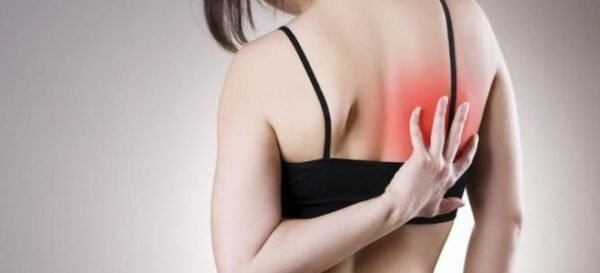
What to do first and how to relieve pain
If a patient has an attack of pain caused by a pinched nerve in the back, then he needs to provide first aid. To do this you need to do the following:
- Unload the back - lay the victim on a hard surface, for example, on a hard bed or floor, after laying a soft blanket over him. To relieve the load from the lower back, you need to place your legs at right angles to the torso (for example, if the patient is lying on the floor, then your legs can be placed on a chair);
- Give a pain reliever, for example, Ibuprofen or Analgin;
- To relieve spasms from muscle tissue, give the patient an antispasmodic drug, for example, No-Shpa. This will not only relax the muscles, but also relieve pain, and also activate blood circulation in the area where the pain is located;
- Call an ambulance.
It is important to correctly lift the patient from a lying position, because any incorrect movement can cause a new pain attack. The patient should get on all fours, lean on a stable object and stand up, while the back remains in the same position. Having risen to your feet, you need to secure your back with a special belt; if one is not available, then use a towel or a warm scarf instead.
If a nerve is pinched in the back, it is necessary to avoid physical activity and drafts, and also maintain bed rest.
Why does a nerve become pinched?
For what reason does pinching occur, and why specifically in the shoulder blade? After all, there are nerves throughout the spine. This is true, but it is in the thoracic area, where the shoulder blades are located, that the nerves are most susceptible to various influences. Second in line is the back, which is supplied with lumbar nerves. A person may also experience pain in the shoulder, collarbone and neck when the nerves of the cervicothoracic area are pinched.
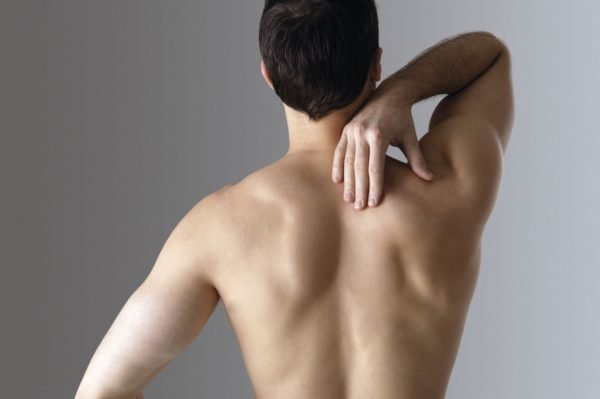
This diagnosis is noteworthy in that a person often makes it himself, saying that a nerve is pinched, and a compress or poultice at home, without bothering to see a doctor, or it will go away on its own. And in most cases, especially if the scapular nerve is inflamed due to hypothermia, the pain actually begins to subside the very next day.
Important! But a pinched nerve in any part of the spine is a symptom that needs to be addressed by a doctor. No pain arises in the body just like that. And the diagnosis signaled by this symptom can only be established by a medical professional.
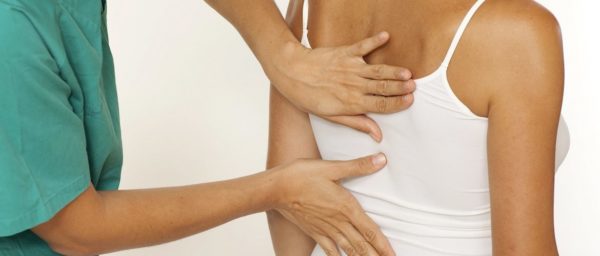
It’s worth starting to understand the problem with the question: how does pinching occur? It occurs due to the fact that the nerve is compressed by the tissues surrounding it. This can be bone or cartilage tissue, muscle or tendon tissue. For this reason, pain can occur at any spinal level.
By the way. Nerves can become pinched not only in the spine; facial, radial, ulnar nerves and so on can also be pinched, causing pain in the corresponding organs.
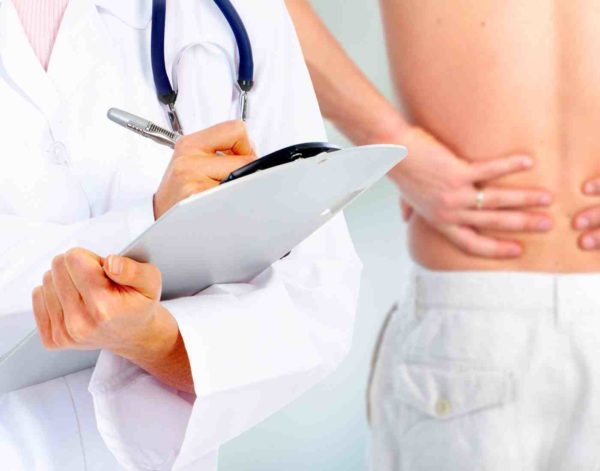
Why a nerve may become pinched:
- due to injury;
- due to tumor;
- a growth forms on the bone tissue;
- the patient leads a sedentary life;
- he experiences excessive stress;
- there is an intervertebral hernia;
- osteochondrosis is present;
- hypothermia occurs;
- disc protrusions are formed;
- this is a consequence of arthrosis;
- the patient has arthritis;
- gastrointestinal diseases;
- there are diseases of the endocrine system;
- tumor-like formations;
- history of an autoimmune disease.
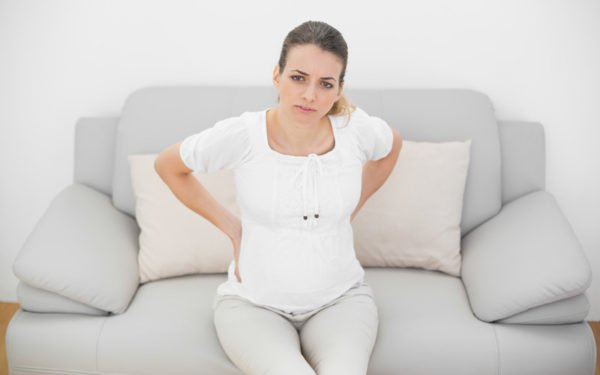
The following can directly cause an attack of pain from a pinched nerve:
- lifting weights, if you do it abruptly or take significant weight;
- a certain position that is not comfortable that a person takes during sleep;
- sleeping on a mattress that is too hard/soft or of poor quality;
- being in a draft, wind, or low temperatures;
- overeating with existing obesity;
- injury to the back or chest.
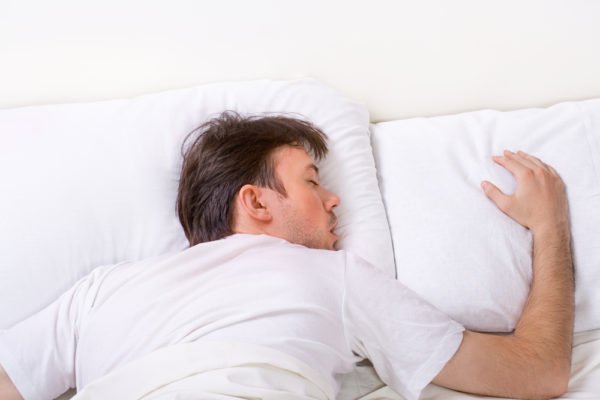
These reasons are secondary. And, unlike the list of reasons given above, they are much easier to deal with. In a short time it is possible to return to your normal life and stop experiencing pain. If the problem is a disease, then the patient must undergo long-term complex therapy so that pinching does not recur.
Important! Neither in the second, nor even more so in the first case is it possible to self-medicate. Yes, if constriction occurs for a secondary reason, it is enough to limit yourself to ointments, compresses and certain medications, but in order for them to be prescribed correctly, you need to go to the doctor.
What to do if your back is blown in the area of the shoulder blades: how to treat it at home?
Such trouble awaits us at any time of the year.
It can occur at work and at home, indoors and outdoors. We dressed lightly, the wind rose, it began to rain, the temperature dropped sharply - our backs were blown. It's hot outside, sweat is flowing, immersion in the alluring coolness of an air-conditioned room or car - your back is blown!
The following situation is also possible: intense physical work, sports activity, warming up the muscles - and even a light flow of wind or air in the room will cause a sharp cooling of the hot back.
Here you can find a review of pain-relieving ointments for the back.
Symptoms of a “blown back”
The most typical are:
- pain in the back muscles that appeared several hours after hypothermia;
- localization of pain: individual areas or the entire surface;
- difficulty moving;
- the need to take a certain pose;
- burning or itching sensations on the skin;
- increase in body temperature.
Important! Hypothermia of the back provokes the manifestation of diseases that will require mandatory medical intervention.
Read about which doctor to see if your back hurts here.
Sciatica is an inflammation of the sciatic nerve. Originating in the lumbar back, the pain spreads to the lower extremities, numbness and difficulty moving the legs may occur.
Read about how to treat a sciatic nerve at home.
Radiculitis is an inflammation of the spinal nerve roots. May have the character of an attack. The person freezes, unable to change his position. Sometimes a sharp pain impulse accompanies certain movements. Nerli's symptom - back pain when tilting the head forward - indicates this disease. Read about radiculitis, symptoms and treatment at home here.
Read about pain relief injections for back pain here.
Lumbago is an attack provoked by osteochondrosis and intervertebral hernia. Characterized by a sudden “lumbago” in the lower back, radiating to the buttocks and thighs.
Myositis is an inflammation of skeletal muscles caused by infection, injury, excessive static or dynamic load, or an autoimmune reaction. The pain intensifies with movement and palpation, the temperature rises, swelling and the formation of nodules in the muscles are possible.
Myalgia (myofascial syndrome) is an inflammatory process in which changes in the structure of muscle fibers lead to irritation of nerve endings. Trigger points or areas form in the muscles. They feel like painful lumps.
Many diseases of internal organs (gastrointestinal tract, urinary and reproductive systems) and spine during hypothermia can also provoke pain in the back.
Only a specialist has the ability to make an accurate diagnosis and prescribe effective treatment.
"Symptoms of Threat"
If you have these symptoms, you must consult a doctor:
- the pain does not subside at rest or when changing body position;
- increasing discomfort;
- disturbances in the normal functioning of the pelvic organs;
- increased or decreased sensitivity;
- development of pain against the background of rising temperature;
- presence of injury;
- unusually long morning stiffness;
- persistent persistence of pain syndrome under the age of 15 and after 50 years;
- unreasonable weight loss;
- presence or predisposition to cancer.
My back was blown... What are the reasons?
The mechanism of pain is a sharp narrowing of the blood capillaries due to hypothermia. Nerve endings transmit signals about disturbances to the spinal cord, and in response, impulses are sent to the muscles, causing them to spasm, which cause pain.
What to do if you have a cold back?
First aid:
- warming up (shower, bath, wrapping);
- limited mobility (horizontal position on a semi-rigid surface).
Medication
The goal is to reduce pain symptoms, prevent its transition to the chronic stage, and return to normal functioning of the body. Alleviation of the situation and the current situation.
The following forms of drugs can be recommended: tablets, ointments, injections, patches.
Analgesic drugs:
- paracetamol (acts quickly, but for a short time);
- tramadol (has a delayed but long-lasting effect);
- zaldiar (combination drug - paracetamol and tramadol).
NSAIDs (non-steroidal anti-inflammatory drugs):
Inhibits the production of enzymes that affect the inflammation process. They have contraindications due to the negative effect on the digestive system.
Complex:
- next, ibuklin, khayrumat (ibuprofen and paracetamol);
- betalgon, betanamilon (nonivamide and nicoboxil).
Muscle relaxants:
- mydocalm;
- baclofen;
- sirdalud;
- tolperisone;
- Tizanidine
Designed to break the “vicious circle”: inflammation maintains muscle spasm, which prolongs the inflammatory response, which intensifies and prolongs pain.
Vitamins:
Physiotherapeutic
These include:
- balneological procedures.
- therapeutic baths (contrast, salt, turpentine, hydrogen sulfide, radon, herbal);
- light therapy (infrared, ultraviolet irradiation);
- pneumocompressotherapy;
- laser therapy;
- ultrasound therapy;
- electrotherapy (galvanization, medicinal electrophoresis, amplipulse therapy, EHF therapy, magnetotherapy, diadynamic, sinusoidal modulated currents);
Reflexology:
- infrared irradiation of active zones.
- magnetopuncture;
- injection reflexology;
- electroacupuncture;
- cryopuncture;
- cauterization, warming up points;
- applique with balls, plates;
- vacuum therapy;
- acupressure;
- acupuncture;
Manual therapy:
- myofascial release.
- acupressure;
- soft relaxing massage;
Physiotherapy:
- Dikul exercise complex;
- Jacobson's method;
- post-isometric relaxation;
- classes in oriental health techniques that improve the function of the musculoskeletal system.
What ointments should I use?
Here you can find a list of pain-relieving ointments for bruises and their use.
Painkillers (irritating and warming effects):
- finalgon;
- capsicum;
- nicoflex;
- analgos;
- efkamon;
- apizarthron;
- viprosal.
Anti-inflammatory:
- ketoprofen; ketonal;
- nice, nimulid;
- diclofenac, voltaren, ortofen, diclovit, diclac, diclogen, dicloran, diclofenacol;
- pyroxekam;
- ibuprofen, dollit;
- indomethacin
Therapeutic patches for back pain:
- Pepper (contains extracts of capsicum and belladonna, arnica tincture and pine rosin);
- Versatis (main active ingredient – lidocaine);
- Voltaren (contains the NSAID diclofenac);
- Ketonal Thermo (warming);
- Nanoplast (magnetic influence of rare earth mineral);
- Dorsaplast (powder with infrared radiation).
Read about what to do if you hurt your back here.
What does traditional medicine advise?
Adviсe:
- Hot water bottle (salt, sand, flax seeds, buckwheat).
- Warming belt, vest made of wool (sheep, dog).
- Baths with herbs (coniferous, oak bark, chamomile flowers).
- Visiting a bathhouse or sauna.
- Applying cabbage or birch leaves.
- Compresses made from mustard, honey, horseradish and potatoes, warm wax, black radish, ginger, bodyaga.
- Rubbing with alcohol, pepper tincture, “Zvezdochka” balm.
- The use of clay, bischofite, paraffin.
- Rubbing in essential oils of fir, lemongrass, mint, marjoram, chamomile, lavender, basil, immortelle.
- Mustard plasters.
- Banks.
- Impact of fresh nettle.
- Hirudotherapy (use of leeches).
- Apitherapy (bee stings, propolis tinctures, honey).
- Kuznetsov applicator.
- Poultices made from linden flowers, nettles, burdock root, hay.
- Alcohol tinctures from the fruits of horse chestnut, Adam's root, pine nut shells, sorrel roots, golden mustache, dandelion.
- Decoctions of birch buds and oats.
- Infusions of creeping thyme, lingonberry leaves, dry dill, parsley roots and greens, and sweet clover.
What not to do:
- refuse medical diagnosis;
- self-medicate;
- limit yourself to analgesics (they will reduce discomfort, but will not affect the development of the inflammation process).
Important! Any medicinal substance, even seemingly harmless folk remedies, can be harmful to health if used incorrectly. Each of them has contraindications and side effects.
Even if the drug is prescribed by a doctor, you must carefully study the instructions for use, conduct a sensitivity test, and strictly follow the dosage and rules of administration.
To prevent your back from getting cold, protect it from hypothermia, drafts and sudden temperature changes.
Source: https://spinaspina.com/lechenie/produlo-spinu-chem-i-kak-lechit-chto-delat.html
How does the patient feel?
How can you understand that the pain that has overtaken a person is due to compression of the nerve? According to symptoms. You need to know that there are different types of nerves. And depending on the type of damage, the strength, speed of occurrence and duration of pain are determined.
Important! If a sensory nerve is pinched, severe pain will immediately occur, which can hardly be tolerated, and motor functions will be impaired. If the motor or autonomic nerve is damaged, the pain will come some time later, will be deep and aching, and the damage will affect the internal organs and the vascular system.
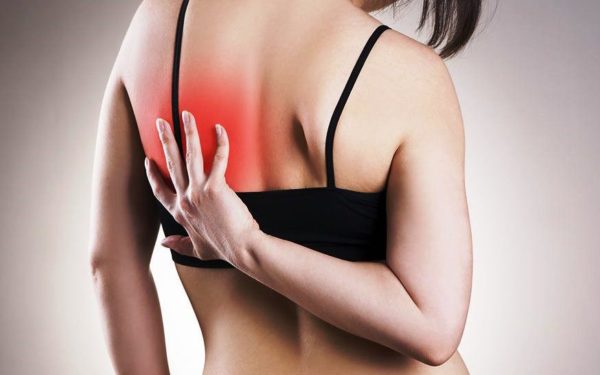
Nerve endings run from the spinal cord throughout the body. They reach every muscle, so a person often experiences pain not only at the site of a specific pinched nerve.
The nerve may be pinched under the scapula or between the vertebrae located at the level of the scapular line, or in almost the entire cervicothoracic area of the spine.
However, most often in the area of pinching the pain is most intense. And since the shoulder blade, especially the left one, is located at the level of the heart region (although some heart diseases and their attacks can cause pain on the right side), painful sensations can easily be mistaken for manifestations of cardiac pathology.
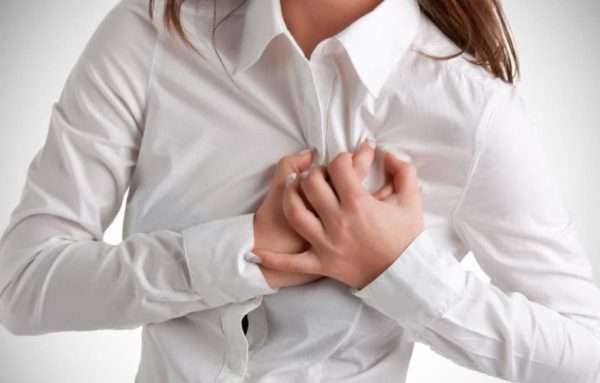
Advice. If there is pain in the shoulder blade, under it or near it, on both the left and right sides, especially if the syndrome is intense, difficult to tolerate, or too sudden, you should go to the doctor immediately. If this is not possible, and the pain intensifies, you need to drink a painkiller, take a horizontal hard surface and call an ambulance.
Pinched nerve in the scapula: what to do
Sometimes people are faced with a situation where the nerve in the scapula is pinched. What to do in such cases and why do such problems arise? Information about this is given below.
Causes of pinched nerves
Nerve tissues in the thoracic spine are most susceptible to mechanical stress. Slightly fewer branches are found in the lower back. Patients often experience pain in the shoulder, collarbone, neck and sternum.
People often engage in self-diagnosis and apply compresses at home based on their own conclusions; they do not go to the doctor for examination, believing that the symptoms can be dealt with quickly. In most cases, signs of pinched nerves under the shoulder blade are eliminated.
Pinched nerves in different parts of the spine require medical intervention . Surely such symptoms do not arise without reason, so professional diagnosis is required. First you need to figure out how pinching occurs. The nerves are compressed by surrounding tissues, bones and cartilage, muscles, and ligaments. Pinching can appear in different departments.
Nerves in the face, elbows, etc. are also pinched, and painful symptoms appear in various organs. There is no independent pathology in the form of pinched nerves; similar disorders occur throughout the body and are detected in many patients in different situations. Therefore, diagnostics are required to determine the patient’s condition.
Reasons why nerves may be pinched: trauma, tumor, growths on bones, insufficiently active lifestyle, too much physical activity, hernia between vertebrae, osteochondrosis, exposure to cold, protrusions in cartilage, arthrosis, arthritis, gastrointestinal pathologies, endocrine system disorders, neoplasms, autoimmune disorders.
Nerves become pinched for various reasons. Concomitant circumstances may arise that worsen or alleviate the condition. Age-related changes and problems with excess weight, poor posture and poor heredity, pregnancy can affect your well-being.
Pain symptoms after a pinched nerve are caused by:
- Heavy objects. If you lift them abruptly or incorrectly, displacement of the spine may occur.
- Uncomfortable posture at work or while sleeping.
- Low-quality mattresses with poor ergonomic properties can cause harm.
- There may be a feeling of pain in the back.
- Obesity occurs.
- Injuries.
Such reasons are of a secondary nature and are much easier to deal with. In the shortest possible time, the patient will be able to lead his previous lifestyle without painful symptoms. If the problem is a disease, the patient undergoes long-term complex treatment to prevent pinching.
It is unacceptable to self-medicate, no matter how obvious the causes of a pinched nerve under the right shoulder blade. A specialist will help you choose the appropriate medications.
How can you determine that a patient’s pain is due to a pinched nerve? It is necessary to find out what type of nerve tissue is damaged, taking into account the duration of the pain and the speed of its onset . When internal nerves are pinched, severe pain occurs and it becomes difficult to move.
When the autonomic nerve is compressed, the symptom occurs later. In this case, the pain is deep, aching, spreading to the vessels and internal organs.
Symptoms
Nerve fibers spread from the spine throughout the body, entering every muscle. Under the influence of various factors, these tissues are pinched under the scapula due to displacement of the vertebrae or the appearance of a tumor. At the site of pinching, signs of the disease appear intensely.
The main symptom is pain that is stabbing, sharp and aching in nature. Another symptom is limited mobility of the problem area, which connects to the compressed nerve fibers.
A pinched nerve under the left shoulder blade occurs frequently, and the pain is transferred to the arm. To determine an accurate diagnosis, you need to undergo examinations by a doctor.
Similar symptoms can occur with cardiac pathologies.
First aid
When a nerve is pinched, the patient feels a lot of pain, so you need to know how to administer first aid to feel better. If the pain is severe, you need to take a horizontal position and try to calm down . Pain medication and sedation are required as the patient will experience stress and pain.
When nerves are pinched, blood vessels are damaged. In this situation, problems with the respiratory system appear. To improve your well-being, you need to free your chest from clothing and ensure a flow of fresh air into the room. It is necessary to use sedatives and painkillers, since patients experience stress and severe pain. After this you need to wait for the doctor.
Possible consequences
Often, as a result of pinching, intervertebral hernia, spasms in muscle tissue, and problems with motor function occur. Immune system disorders may occur, and the protection of damaged cells from viruses and harmful tumors deteriorates. In some situations, circulatory disorders and weakness cause pathologies of internal organs.
Traditional medicine
Folk remedies should be used as a complement to the main therapeutic methods. The recommendations are suitable for use at home after stopping treatment. The following methods have proven themselves to be the best:
- Bay leaf and juniper in combination provide an effective pain reliever. You will also need butter for cooking. After mixing all the ingredients, you can rub the ointment into the sore spot.
- A bath with herbal infusions reduces pain and helps you relax. It is necessary that the water temperature is about 37 degrees, after which other ingredients are added. The finished product is poured into the bath; you need to bathe for at least half an hour.
- When nerve tissue is pinched, rubbing tinctures with wormwood extract . You need to use 400 ml of boiling water and treat the damaged area.
- Tansy tincture is taken orally. 1 tbsp. lie The plant is poured with boiling water, brewed for 2-3 hours, then consumed 3-4 times a day, 1 tbsp. lie
Orthopedic corsets
Corsets are suitable for holding the spine in one position. The deformation of the location of the vertebrae is eliminated and the pressure is relieved from the diseased area. Let's look at the types of corsets:
- Thoracolumbar. Designed for fixation of the thoracic and lumbar regions, interscapular region.
- The lumbosacral ones are designed to relieve pressure in the pelvic area.
- The lumbar supports the corresponding area, slightly encircling the pelvis and sternum.
- Devices for pregnant women are applied to the shoulder blades and lower back, eliminating pain due to the load on the musculoskeletal system. The corset is great for restoring the body after childbirth.
Patients exposed to physical activity must understand what to do if a nerve becomes pinched. Often it is impossible to do without outside help.
Often, when pain occurs under the shoulder blade, patients think that they are having a heart attack . They begin to swallow Validol, Corvalol, but the symptom does not go away. Pinched nerves can be distinguished by the fact that symptoms occur when trying to draw air into the lungs, bend over, or stand up.
The intensity of pain is reduced if you apply a bandage to the sternum and in the area under the shoulder blade. If you take a painkiller, you can get the effect after 10-15 minutes. For a heart attack, medications do not work. The pain does not change depending on movement.
Source: https://nevrology.net/sindromy-i-zabolevaniya/perifericheskoj-nervnoj-sistemy/zashhemlenie/v-lopatke-chto-delat.html
Diagnostics
Since pain in the scapula can occur for a wide range of different reasons, the examination is carried out preliminary and detailed (based on a preliminary diagnosis).
- If the cause of the pain is suspected of cardiovascular pathology, an electrocardiogram and ultrasound examination are performed.
All this is done in order to exclude global causes, and if possible, turn to the treatment of secondary ones.
Important! The best way to determine exactly why the nerves are pinched is with computed tomography and MRI. Electromyography will also show the presence of nerve damage.
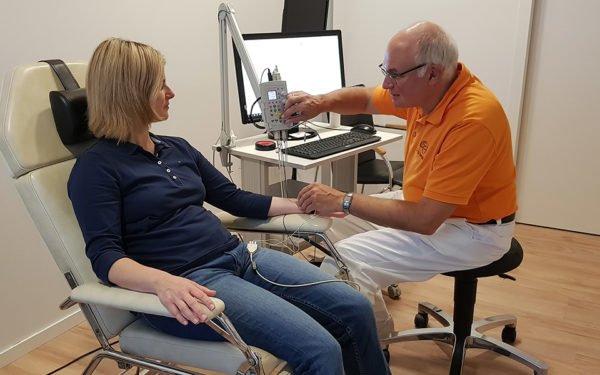
Treatment
When a nerve is pinched and severe pain is felt, the following must be done.
- The patient lies down on a surface, preferably one that is hard.
- Painkillers are taken.
- A sedative is also given, since the patient may experience not only pain, but also stress.
- Blood vessels, along with the nerve, may be pinched. In this case, there is difficulty breathing. The patient needs fresh air (open the window) and freeing the chest from clothing.
- Further, in case of severe pain, an ambulance is called.
Therapy for pinched nerves is carried out according to a specific scheme.
Table. Stages of treatment for a pinched nerve.
If you want to learn in more detail how to treat a pinched nerve, and also consider alternative and effective treatment methods, you can read an article about this on our portal.
When carrying out medication therapy, when nerve compression in the scapula area is relieved, various types of drugs are used.
By the way. Sometimes medications may not be enough and surgery to release the nerve will be necessary to successfully correct the problem. In any case, any treatment is carried out in a complex manner, and after surgery there follows a comprehensive recovery.
Treatment largely depends on the underlying cause of the symptom. If the compression is caused by a tumor, you need the help of an oncologist. If the problem is in the heart and blood vessels, you cannot do without a cardiologist. If the patient is overweight, a nutritionist will be needed.
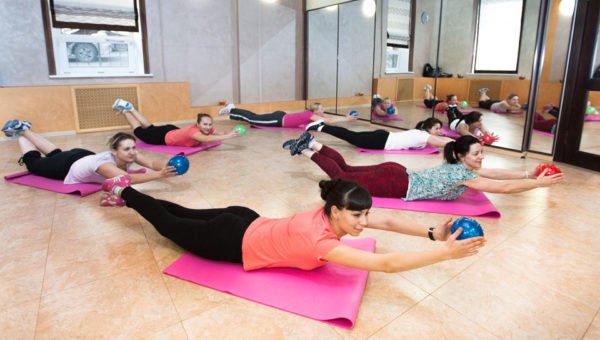
Important! Recovery is supervised by a doctor. Exercise therapy exercises are prescribed depending on the degree and depth of nerve damage. Acupuncture and massage are performed only by a specialist.
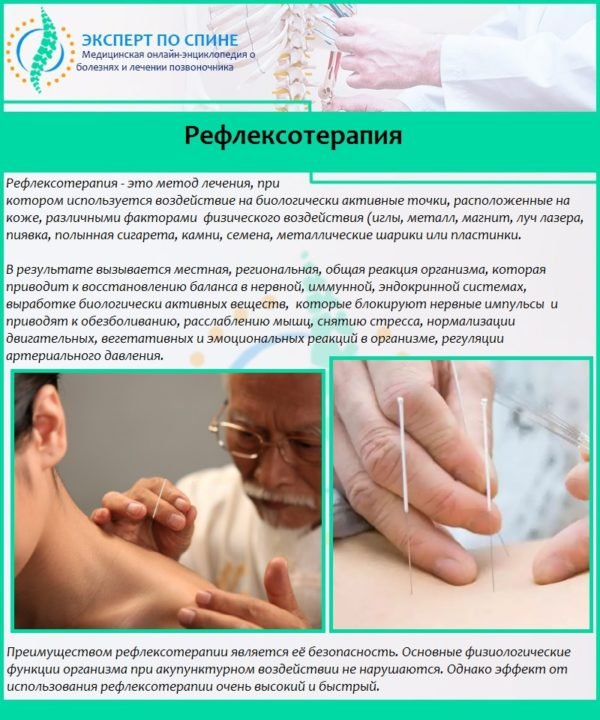
If you set out to find a folk remedy that helps with a pinched nerve under the scapula, you will find many of them. But not everything is worth using, especially without coordinating your actions with your doctor.
Important! If the causes of scapular pain are secondary, and it is not a consequence of a serious illness, and only after the pain syndrome has been completely relieved with medication, you can begin to use traditional medicine methods to restore the condition of the nerves.
Folk remedies include compresses, decoctions, medicinal baths, ointments, infusions, and applications.
- In this situation, ointments that are prepared from natural ingredients can be made from juniper needles, bay leaves, with the addition of butter. The components are crushed to a powder state, driven into an oil base, everything is applied to the area where pain was previously felt and muscle tension was observed.
Types and treatment of neuralgia
If a person has a cold on his nerve, pain and vegetative manifestations will immediately indicate the development of the inflammatory process, i.e. increased sweating, hyperemia, myalgia, etc. The most common types of neuralgia are:
- trigeminal – inflammation of the trigeminal nerve;
- intercostal – compression of the spinal nerve roots;
- occipital – damage to the occipital nerve;
- radial and ulnar – compression of nerve bundles located in the arms.
If any of the above types of neuropathy develop, the following general symptoms are observed:
- hyperthermia;
- marbling of the skin;
- irritability;
- fast fatiguability;
- pain at the location of the affected nerve roots.
If a person has a cold in the occipital nerve, he will face severe headaches. Their appearance is caused by compression of the nerve roots by surrounding tissues.
If left untreated, the pain becomes permanent, and any head movements provoke nausea and dizziness.
The causes of occipital neuropathy include:
- muscle strain;
- endarteritis and gout;
- diabetes mellitus and osteochondrosis;
- injuries and hypothermia;
- infectious diseases (meningitis, encephalitis).
The main symptoms of a cold nerve will be:
- headache;
- “lumbago” in the lower part of the neck;
- increased pain when turning the head;
- sensitivity to bright light;
- hypo-hypersensitivity of the skin.
In most cases, entrapment of the trigeminal nerve on the face is due to the following reasons:
- multiple sclerosis;
- hypothermia;
- malocclusion;
- muscle strain;
- vascular aneurysms;
- viral and bacterial infections.
If a person has a cold in the jaw nerve, the development of the inflammatory process will be signaled by:
- pain while chewing;
- numbness in the lower part of the face;
- increased salivation;
- involuntary contraction of the jaw muscles;
- skin hypersensitivity.
The hand is innervated by several nerve bundles, but in the case of negative effects of exogenous and endogenous factors, the radial, median and ulnar nerves most often suffer. The main causes of pathology include:
- hormonal imbalances;
- infectious diseases;
- vascular disorders;
- injuries;
- thyrotoxicosis;
- physical stress;
- deformation and inflammation of the ligaments in the hand.
The following symptoms indicate a cold in the nerve of the hand:
- sharp and aching pain in the shoulder and arm;
- swelling of the affected limb;
- partial paresis;
- limited limb mobility;
- numbness of fingers;
- decreased hand sensitivity;
- increased pain with muscle tension.
Between the 12 pairs of ribs there are a large number of nerve endings. If the peripheral nerves are pinched in the thoracic region, severe pain occurs under the scapula. If the clamping occurs on the left side, the symptoms of a neurological disease are often confused with pain in the heart.
- osteochondrosis and compressor fracture;
- hypothermia and hormonal imbalance;
- lung disease and anemia;
- multiple sclerosis and diabetes mellitus;
- scoliosis and kyphosis.
What symptoms indicate inflammation if a person has a cold on the nerve under the scapula?
- pain in the thoracic spine, radiating to the neck or lower back;
- impaired sensitivity of the skin at the site of inflammation;
- burning and itching in the area of the shoulder blade;
- increased pain when sneezing, coughing and moving.
Is it possible to warm a cold nerve? Experts do not advise self-medication, as this can only worsen the course of the disease.
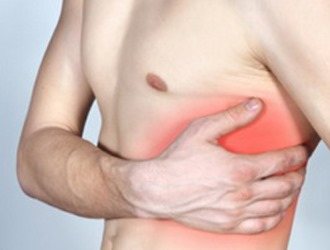
Dry heat is used in the treatment of neuropathy, but in the absence of abscesses in the affected tissues.
Warming up of purulent foci of inflammation provokes the development of a bacterial infection, which can provoke severe complications including paralysis.
Physiotherapeutic procedures, medications and surgery are used to eliminate the disease. Conservative treatment of a cold nerve is accompanied by taking the following medications:
- antibiotics;
- analgesics;
- antidepressants;
- multivitamins;
- muscle relaxants;
- anti-inflammatory drugs.
How to cure a cold nerve? To quickly block inflamed nerve bundles and treat them, the following types of medications are used:
- "Sirdalud" is a muscle relaxant, the components of which act on skeletal muscles, promoting its relaxation;
- Finlepsin is an anticonvulsant drug that eliminates muscle spasms. Has anti-inflammatory and analgesic effects;
- Cymbalta is an antidepressant that is used in the treatment of peripheral neuropathy. Eliminates irritation and promotes normal sleep;
- "Sulindac" is a non-steroidal anti-inflammatory drug that accelerates the process of regeneration of nerve fibers;
- "Metypred" is a glucocordicosteroid hormone that promotes the synthesis of lipocortin, which reduces inflammation.
conclusions
How to treat a cold nerve?
Neuropathy in 90% of cases is accompanied by severe pain in the affected areas of the body. Timely treatment helps prevent tissue abscess and complications.
To eliminate neuralgia I use antidepressants, multivitamins, antibiotics and analgesics. They relieve symptoms of neuropathy and promote decompression of nerve roots.
Preventive actions
To prevent a pinched nerve from happening to you, you can protect yourself from it with timely prevention. Preventive measures include the following.
- Avoid hypothermia. Do not be in a draft, wear appropriate clothing if it is cold outside, and do not stay in cool rooms.
Getting rid of extra pounds is a big step in preventing pinched nerves. This will also help improve your overall health and reduce the risk of many diseases. Also, if there are problems with posture, even minor ones, it is necessary to correct it. And if you are over thirty, you need to be examined by a neurologist once a year.

